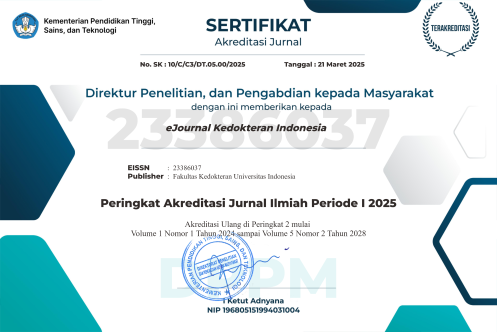The Relationship Between Pesticide Use and Cognitive Impairment in an Agricultural Community of Tomohon City, North Sulawesi
DOI:
https://doi.org/10.23886/ejki.13.961.42Keywords:
pesticides, cognitive impairment, MMSE, MoCA-INAAbstract
This study investigates the cognitive effects of pesticide exposure on agricultural workers from a village in Tomohon City, North Sulawesi, Indonesia. Employing a cross-sectional design from July to September 2024. This study assessed the demographic characteristics, pesticide exposure patterns, and cognitive function of 97 participants aged ≥18 using the Mini-Mental State Examination (MMSE) and Montreal Cognitive Assessment (MoCA-INA). The findings reveal a clear association between direct and indirect pesticide exposure and cognitive impairment. Direct exposure was linked to slightly lower cognitive scores than indirect exposure, with both groups scoring below established thresholds for normal cognitive function, particularly in memory, attention, and executive functions. Inconsistent use of personal protective equipment was noted among participants, with common immediate symptoms including visual disturbances and memory deficits following pesticide application. These results suggest that minimal pesticide exposure may contribute to cognitive decline, potentially accelerating age-related impairments. The underlying neurotoxic mechanisms likely involve oxidative stress, mitochondrial dysfunction, and neuroinflammation, which disrupt neuronal integrity. These findings underscore the urgent need for enhanced occupational health policies, stricter safety measures, and further research to mitigate the cognitive risks of pesticide exposure in agricultural populations.
Downloads
Downloads
Published
How to Cite
Issue
Section
License
Copyright (c) 2025 Angelina Stevany Regina Masengi, Christi Diana Mambo, Edward Nangoy, Jimmy Posangi, Marthen Theogives Lasut, Junita Maja Pertiwi, Finny Warouw, Yulianty Sanggelorang, Daniel Febrian Sengkey, Juliet Merry Eva Mamahit

This work is licensed under a Creative Commons Attribution-NonCommercial 4.0 International License.
Accepted 2025-04-11
Published 2025-05-26



